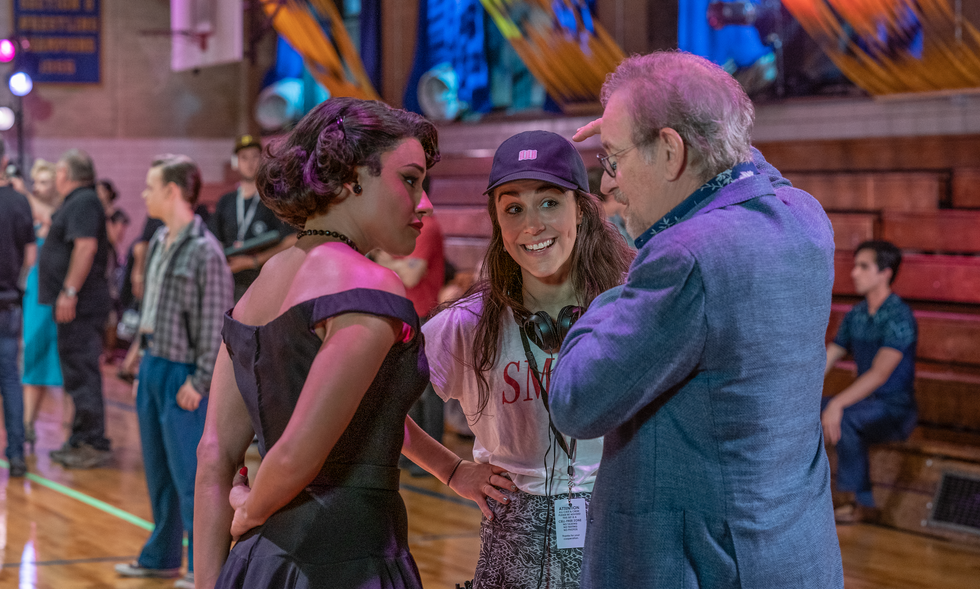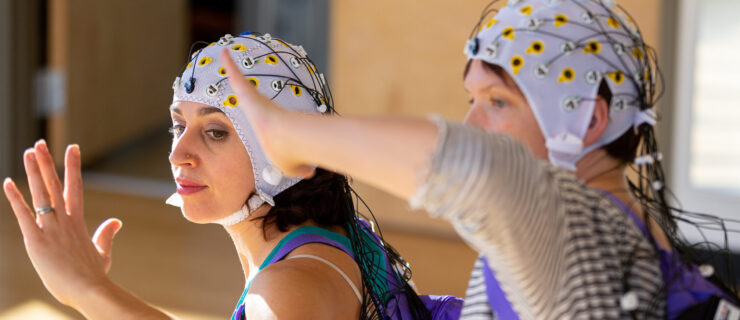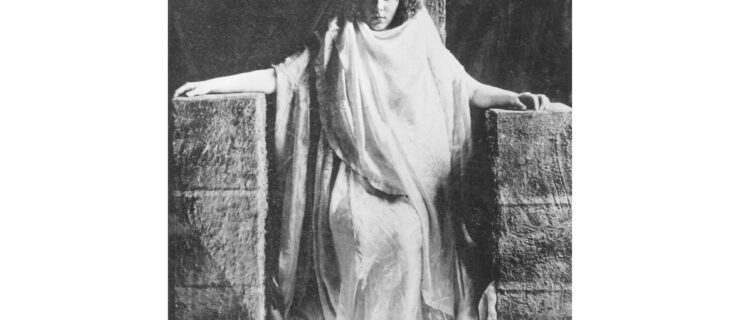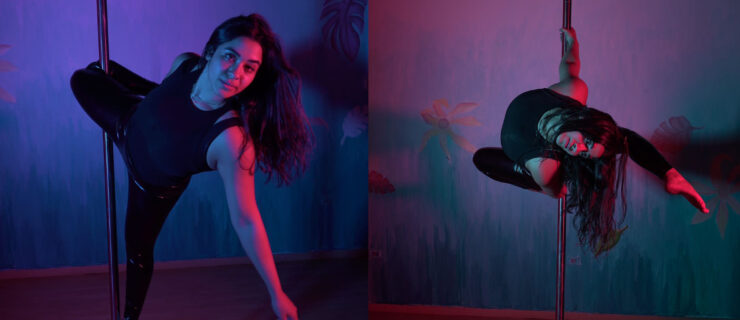Patricia Delgado’s Second Act: Film, Broadway, Juilliard & More
Early on in the rehearsal process of the upcoming film West Side Story, director Steven Spielberg turned to Patricia Delgado and asked her why the dancers weren’t in unison. “He was right,” remembers Delgado, who was serving as associate choreographer to her husband, choreographer Justin Peck. “I explained to him that it takes a lot of rehearsals and drilling of the movement to get them to look like a company,” she says. She promised him that once they got to set, the dancers would be beautifully in sync. “It was a key moment for me to hear from Steven the clear vision he had for the dancing,” she recalls.
Since retiring as a principal dancer with Miami City Ballet and moving to New York City in 2017, Delgado, now 38, has taken on a variety of new artistic challenges. She’s set Peck’s ballets on companies in the U.S. and abroad; she’s taught at Juilliard; she’s danced for Pam Tanowitz, Christopher Wheeldon and Peck. In June of 2018, she began a two-year dive into West Side Story, beginning with work on the film and, later, as associate producer on the recent Broadway revival choreographed by Anne Teresa De Keersmaeker.
Delgado’s empathy and willingness to learn on the fly allowed her to thrive in these unfamiliar roles. She emerged from both West Side Story projects “a changed person without a clear plan, but I knew I wanted to devote time to my own dancing,” she says.
Saying yes first and asking questions later can be scary. But Delgado has been able to quickly adapt to new challenges. While she is blessed with connections, it is her ability to utilize her lived experience to facilitate further growth that makes her a person people want to work with on and off the stage.
While focusing on her own return to performing, Delgado received an invitation from Alicia Graf Mack, director of Juilliard’s dance division, and joined the faculty part-time in the fall of 2019, teaching ballet. She is also a member of the school’s mentor program. “My heart was trying to get back to my own performance, but the minute she called, I said yes.” For Delgado, the school had long carried an allure. She had worked closely with two Juilliard graduates, Jason Collins and Victor Lozano, on Tanowitz’s Blueprint, and crossed paths with many other alums through various projects. “Juilliard-trained dancers have a sense of self, purpose and a grounding versatility to their dancing.”
The school’s supportive atmosphere allows Delgado to continue to stretch herself beyond the studio. The faculty includes many other active artists. “Teaching reminds me of a performance,” says Delgado. “You have to make game-time decisions. Even if I prepare a class, the students dance and I immediately engage in dialogue with them. It’s like responding to a partner onstage.”
Delgado’s enthusiasm for these give-and-take dialogues has also proven useful when “jumping into the deep end” of production work. Late in the development of the 2020 Broadway revival of West Side Story, she was brought on to offer a Latinx perspective to De Keersmaeker’s choreography for the Sharks. Her respect for De Keersmaeker initially made her apprehensive about the task at hand. Delgado was excited by both the choreography and the dancers, but could sense miscommunication was acting as a disservice to the process large. Spending a few hours going through the Shark choreography with De Keersmaeker, Delgado found her suggestions were met with enthusiasm.
“It was about connecting artists,” she says. “I wanted to empower her to allow the Sharks some freedom for their own authenticity to come out. It’s like translating a language. I was able to figure out a way to explain to her what the Latinx actors in the cast were craving.”
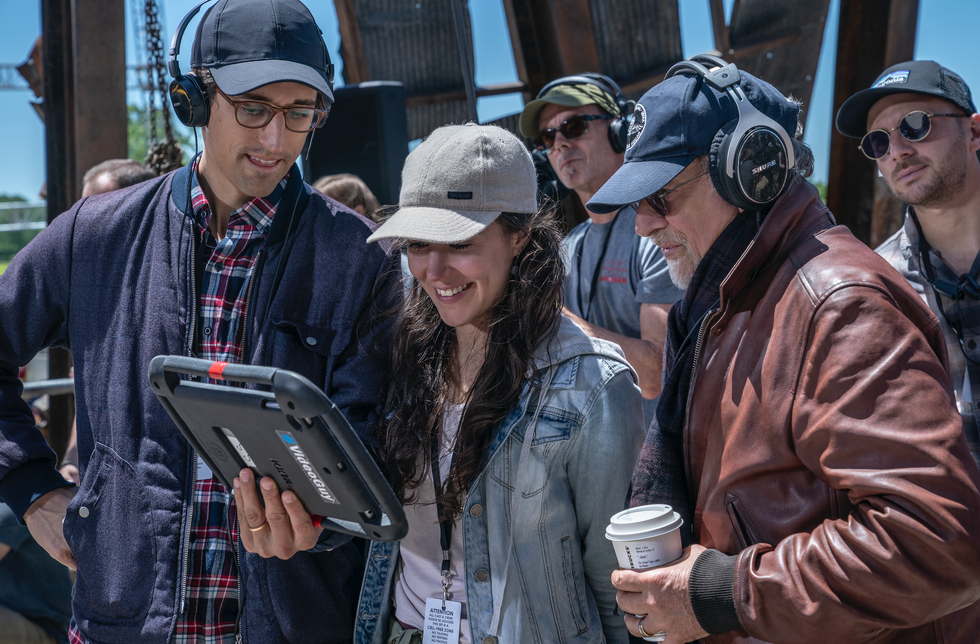
Niko Tavernise © 2020 20th Century Studios
A genuine curiosity about what will serve others best has been a guiding light for Delgado as she takes on more leadership roles. Working on the West Side Story film, she helped add authenticity to Peck’s movement vocabulary for the Sharks, but found her “real role was to translate Justin’s style and choreography for dancers with a wide array of training and experience. I had to figure out, on an individual basis, what 60 different people needed in order to make the choreography look not just in unison but in the same world.”
Her concerns were not only with what happened on camera, but also with much of what happened behind the scenes. She was fortunate to work with a production team that was open to giving the dancers exactly what they needed, but it was Delgado’s responsibility to identify every potential crisis before it happened.
“It was translating the needs of the dance world to the film world,” she says. “They were so eager to get it right. The most inspiring producer, Kristie Macosko Krieger, said, ‘What do you need? I want to know everything you need so that we can get it for you because we want this to be the best.’ I remember going to bed at night and thinking to myself, Have I thought of everything that these cast members might come into contact with?”
Finding a common language between creator and interpreter is not always easy. Delgado is deeply attuned to the simultaneous processes of the individual artists involved in a creative process. “I’ve never been a choreographer, a writer, a music director. I have so much to learn from how they do what they do and how, by asking them about what they are going through, I can figure out a way to help them.”
As a dancer, Delgado had struggled with feeling pressured to re-create rather than fully take ownership of her work, and has come to recognize the necessity to lift up the voices of performers. “I think the more I empower the artists to find themselves within the choreography, text or song, it’s the best thing I can do. I can share all the information I have studied—all the analogies, stories and research I dive into—but in the end, how do they find themselves in the work and can I assist them in that journey?”
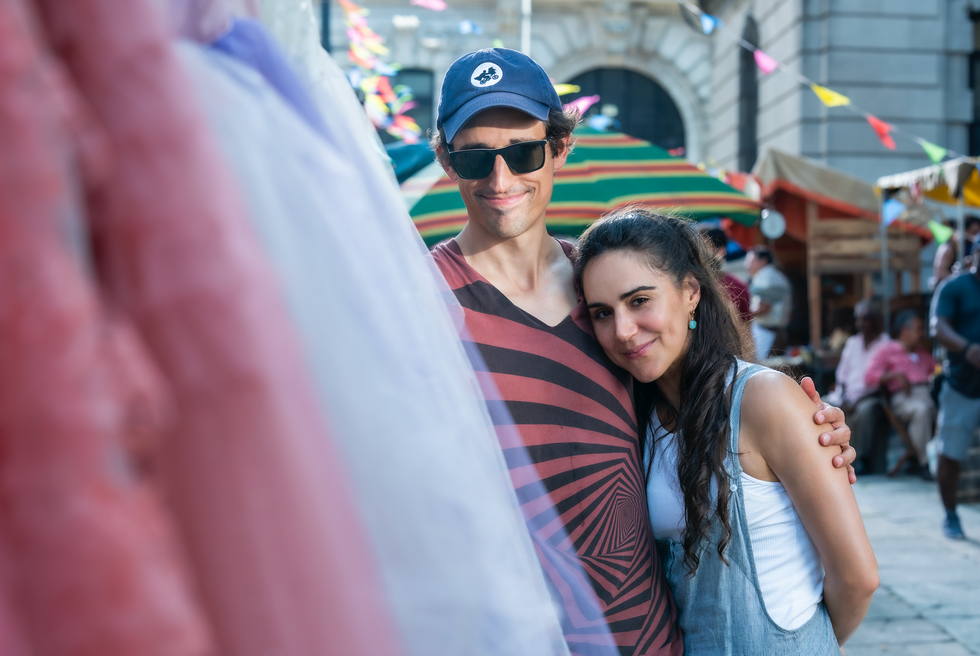
These new experiences have changed her approach to her own performing. In early September of 2020, after nearly seven months of lockdown, Delgado performed Peck’s Dark Side of the Gym with her husband at the Kaatsbaan Summer Festival. “I sometimes wondered if activating all these other sides of my brain and analyzing performance, dance and training so intensely would negatively impact how I interact with my own dancing,” she says. “It’s the opposite. I’m less judgmental of myself and more creative. I can surrender completely.”
Her return to the stage was also a touching signifier for a new journey in the Delgado-Peck household—Delgado is pregnant with the couple’s first child. “It was our first pas de trois, and I’m so grateful I got to experience what it feels like to dance with a little being growing inside of me.” Delgado and Peck share a palpable chemistry when performing together, but the knowledge that they were dancing for three heightened the moment. “Justin always takes care of me onstage, but that show was extra. He was so present and getting such a kick out of getting to dance with me and our little baby.”
